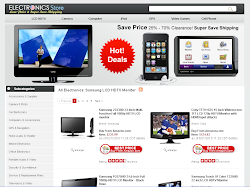What does LCD TV mean and how does it function? LCD stands for liquid crystal display. Behind the screen are a number of pixels followed by a fluorescent light. When this light falls on the pixels, an electric current is generated, creating light variations, which make up the vividly colored images that we see. Generally, the twisted nematic liquid crystal is used which has a naturally twisted crystalline structure.
The screen size of an LCD TV varies between 13-46 inches and it is about 2 inches deep in thickness. They are very light and so extremely easy to install. This indicates that they require very little space and come with a very sleek look. In fact, they can very well be compared to the fragile beauty of a woman!
Next is the consideration of the 'burn-in' factor. LCD TVs are not susceptible to 'ghosting' which results due to premature dying out of the pixels. The uniquely twisted crystals do not allow 'burn-in' or 'ghosting' to happen.
There has been a marked improvement in the refresh rate or response time of LCD TVs. Previously, the images tended to lag behind and stay on screen for a period of time that was much more than necessary. Recent technological advances have put all that behind. Usually, the response time varies with the size and quality of the LCD TVs.
The contrast ratio in the more advanced LCD TVs is 1000:1. The contrast ratio is measured by the ratio between the brightest white to the darkest black. The scenario has improved here too. Research is on to push the ratio well past the 1000:1 mark.
Sixty-thousands hours is the average life span of an LCD TV. So at an average viewing of 8 hours a day, an LCD TV should last for about 20 years. The life span of an LCD TV is dependent on the back-light. Since it uses a liquid crystal, there is nothing else which can wear out other than the back-light. Technology has found a way around this problem by creating replaceable back-lights as well.
Power consumption, which is perhaps a very important aspect, has a definite advantage in case of LCD TVs. LCD TVs utilize fluorescent back-lighting and so power consumption is low and steady.
LCD TVs are unaffected by changes in air pressure. This makes it a favorite among air travelers. The performance is consistent and the picture flawless, regardless of the altitude of the airplane.
There is much talk about mercury being used for the fluorescent lighting. But, the manufacturers will vouch-safe for the fact that a nominal amount of mercury is used. This mercury does not come in contact with the viewer and so is entirely harmless.
Some manufacturers are trying to incorporate picture-in-picture feature in their monitors. This feature enables a viewer to see one program on the full TV screen while a few other programs can run in small windows in it. The viewer gets the added advantage to watch a particular program, while waiting for the intermittent advertisements to end in another window.
Experiments are on to extend color reproductions in LCD TVs. The idea is to use two back-lights with slightly differing intensities of colors in consecutive frames. This will enable the viewer to experience a better and a more vivid picture using a more precise color variation.
An LCD TV is a whole new experience, the flavor of which can be savored only by purchasing one. The advantages are manifold and the experience is just exotic. Indulging in one is a worthy bargain.
Roberto Sedycias works as IT consultant for Polomercantil


0 comments:
Post a Comment